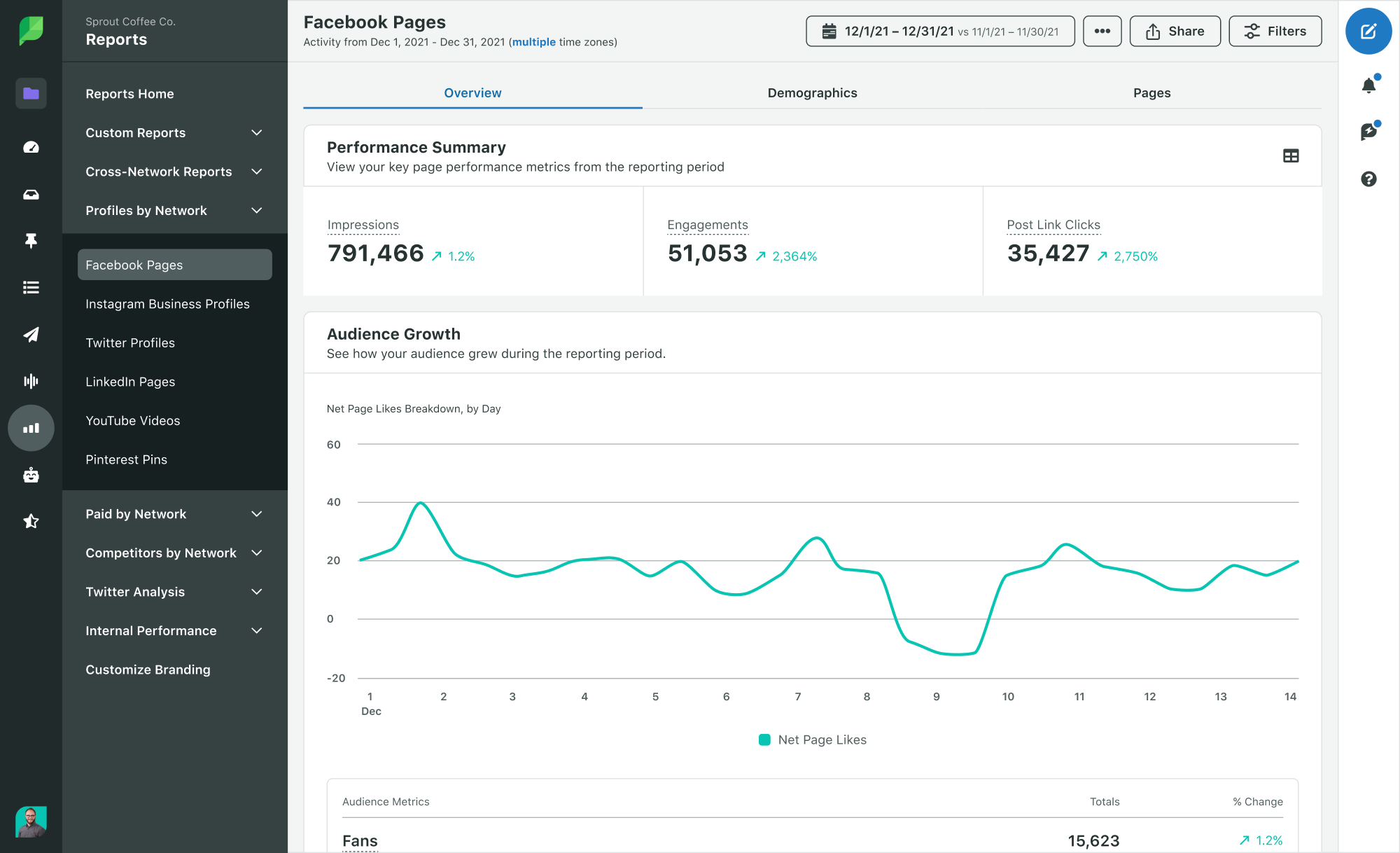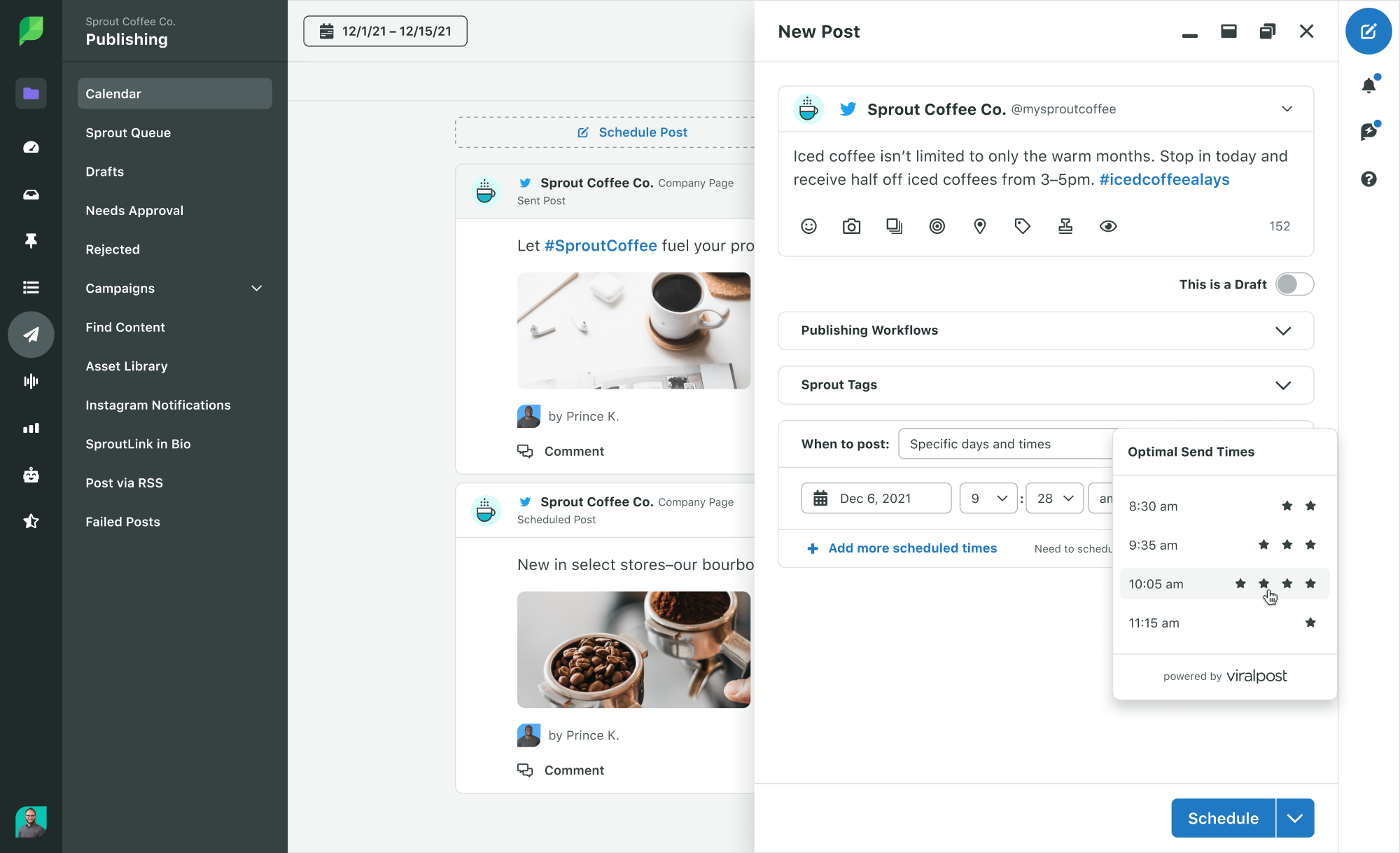Online shopping is going social.
Social commerce features are emerging across a number of platforms, creating new opportunities for brands big and small. The COVID-19 pandemic put further strain on brick and mortar businesses. Now executives are all in on digital transformation.
How can you strategically take advantage of this new revenue opportunity? In this article, we give you a detailed breakdown of social commerce: what it is, how it works and most importantly, how it could work for your business.
What is social commerce?
Social commerce is the buying and selling of goods or services directly within a social media platform. This model moves social media beyond its traditional role in the discovery process by encouraging users to complete the entire purchase process without leaving their preferred apps.
Executives overwhelmingly agree that social commerce is driving an increasing portion of their company’s marketing-driven revenue, according to The State of Social Media Investment Report. About eight in 10 expect to be selling their products or services via social within the next three years.

In 2020, Facebook, Instagram and Pinterest launched revamped social commerce tools to help retailers streamline online shopping experiences in the midst of the pandemic. These features create new digital storefronts that can be found organically or boosted through paid advertising.
The difference between social commerce and ecommerce
Ecommerce broadly enompasses the process of buying and selling goods online. The model is convenient, but it’s far from perfect. Over 50% of all internet traffic is from mobile devices, and mobile users have a much higher cart abandonment rate than desktop users. As buyers move to the small screen for everyday purchases, streamlining your checkout process is key.
This is where social commerce comes into play. It removes the drop-off points that can result in abandoned transactions.
The best social commerce platforms to use in 2021
So far, three major platforms have introduced social commerce features: Facebook, Instagram and Pinterest. Others aren’t far behind, with both Youtube and TikTok exploring “shop now” buttons. Twitter is experimenting with a new card format that features a large “Shop” button, as well.
If you’re interested in getting ahead of this potential revenue channel, here are the platforms you’ll want to test out:
Facebook’s social commerce tool, Facebook Shops, has a very low barrier to entry. Shops are free to set up and are hosted within your Facebook business profile.
If your ecommerce solution is supported as a partner platform, you can automatically sync your entire inventory list in seconds. If not, product information can be uploaded via a spreadsheet.
The Facebook Shop tab on the platform’s mobile app features products based on user preferences to encourage organic brand discovery. Once consumers find your products, they can complete a purchase within the app or on your website. Sellers communicate with customers within Messenger to ask questions, offer support and more.
Instagram Shopping is directly linked to your Facebook Shop. To set up a shop, users must link their Instagram business account to their Facebook business profile. Once that’s completed, users can upload an existing product catalog or create a new one.
Instagram offers more opportunity for creative social commerce promotion due to the visual nature of the platform. Brands can drive interest through shoppable posts and Stories that link directly to in-app product pages. Like Facebook, purchases are processed within the app or on your business website.
Product Pins are not direct social commerce tools, as buyers still redirect to a product-specific landing page to complete their purchase. These shoppable posts look like regular pins with additional fields for pricing and availability information.
Brands using Shopify can use the Pinterest for Shopify app to add their product catalog to their Pinterest business page. If you’re using another ecommerce platform, you can still set up Product Pins by manually marking up your product page using Graph, Schema.org, or oEmbed.
Eighty-nine percent of Pinterest users are actively searching for purchase inspiration. Although the setup process takes some technical know-how, Pinterest Product Pins get your brand in front of ready buyers.
3 social commerce examples you can learn from
1. The Tiny Tassel
The Tiny Tassel, a retailer specializing in handmade jewelry, uses Facebook Shop features to create informative, Facebook-native product pages. Each listing features detailed product descriptions, customization options and shipping information.


Brands should follow Tiny Tassel’s lead and post listings that communicate value. This builds trust with potential buyers who are new to your brand, motivating them to make that first purchase.
2. Patagonia
Pinterest boards can be set up to act as product navigation tools for your audience. Take Patagonia’s Pinterest structure: their Product Pin boards mimic its website navigation, creating a familiar experience for returning audiences and new potential customers that click through to the brand’s main site.


Most social commerce platforms offer just enough flexibility to recreate your brand experience. Use these tools to create consistency for your audience.
3. Target
Catalog setup can take a long time If your ecommerce platform doesn’t partner with Facebook. Rather than list all of its products, Target focuses on items that align with its Instagram content strategy. This creates a better browsing experience for its established Instagram audience.

If you’re working with a larger inventory, you can use Sprout’s Instagram Performance Reports to make smarter listing choices based on content engagement and hashtags consumers associate most with your brand.
4 key benefits of social commerce
1. Get in front of more potential customers
Traditional brand loyalties are wavering as people buy more online. Among three-quarters of U.S. consumers who changed their shopping behavior since the start of the pandemic, 40% have switched their brand preferences to better suit their digital shopping habits. And with over 50% of consumers learning about new brands on social media, now is the time to start rethinking your profile experience.
You only get one first impression. When it comes to brand reputation, the buying experience is just as important as the product itself. Social commerce features streamline that first purchase, creating a winning customer experience that people want to repeat.
2. Convert customers where they are
Social media usage is booming. A majority of consumers say that their usage has increased over the past year, and many expect a continued rise over the next three years. To meet your customers where they are, you should aim to offer more opportunities for engagement on social media.

Social commerce features create a natural next step for customers who already love your awareness content. Removing a step in your buying process can reduce friction in your sales funnel, capturing revenue that might have been lost if a buyer did not follow through on a redirect.
3. Increase reviews and recommendations
If your business is new to selling online, your social media accounts are the perfect place to begin establishing much-needed social proof. When shopping online, your buyers can’t necessarily test or try on your product. Reviews can be the key to making an educated purchase decision.
Managing your end-to-end customer journey on social media creates a positive feedback loop that impacts your bottom line. Your social content attracts new followers into your funnel, but offering social commerce gives them a chance to purchase and leave reviews in one centralized location. As your engagement continues to grow, social media algorithms will deem your content relevant to even more potential customers.
4. Gather useful data on your customers’ social habits
Social commerce features give you direct access to your customers’ social profiles. Savvy sellers can use this information to confirm existing voice of customer research against real examples.

Combine these insights with routine listening practices to create more inspired conversion experiments. Findings can inform messaging A/B tests, CTA optimizations and more, so you can make a bigger impact with your target audience.
3 ways to increase sales on social media
1. Know your audience
Align your social commerce strategy with your target social audience for maximum engagement. Choose products and messaging based on this specific customer subset rather than repurposing what’s on your website verbatim.

A social media analytics tool can help you keep up information as your audience grows. Sprout Profile Reports offer follower demographic data that can inform customer personas by platform. Use these in combination with post performance data to make your initial decisions about which products to list and how to position them.
2. Schedule your content
Once you share a listing, schedule some promotional posts to build interest and drive traffic to your new social storefront. This is a great way to share additional product information, like walkthroughs and close-up shots.

Using an automated scheduling tool like Sprout’s ViralPost® can help increase engagement. By analyzing your audience’s usage and engagement patterns, this patented technology will share your posts at the best time for authentic engagement.
3. Learn what works (and do more of it)
As you dip your toe into the world of social commerce, the best thing you can do is measure, measure, measure. Knowing what’s working can help you repeat your success as you scale your strategy. It can also illuminate new opportunities you might have otherwise missed.
Monitor your social analytics to manage performance. Remember to go beyond sales alone by digging into sentiment analysis and inbox reports. These analyses gather information from both direct and indirect messages, providing useful data on how people are feeling about your brand. With Sprout, you can schedule report deliveries on a weekly or monthly basis to stay on top of this process.
Get started with social commerce
Social media has revolutionized the way businesses and consumers interact, and social commerce is its newest frontier. Now is the time to be adaptable and lean into change. The earlier you experiment with social commerce, the faster you can scale later. For more on how businesses are doubling down on social media download The State of Social Media Investment today.
This post Social commerce: How it works and why you should care in 2021 originally appeared on Sprout Social.
from Sprout Social https://ift.tt/2QLd4xR
via IFTTT
No comments:
Post a Comment